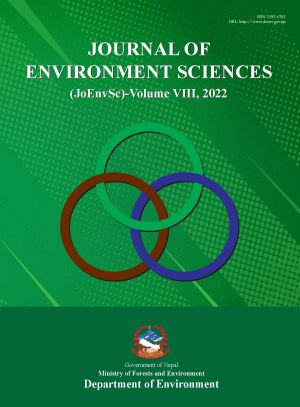Rainwater Harvesting Practices and Its Effectiveness in Kathmandu Metropolitan City
DOI:
https://doi.org/10.3126/jes.v8i1.53652Keywords:
Hydro-meteorological data, Rainwater, Rainwater harvesting, SanitationAbstract
Water scarcity has been a major problem of Kathmandu Metropolitan City (KMC). Different interventions are being attempted to solve this problem including the highly discussed Melamchi Drinking Water supply project. Thus, so rainwater harvesting (RWH) could be a promising approach to satisfy water to some extent. The study has aimed to assess the status of rainwater harvesting practices in KMC and to examine its effectiveness in overcoming the water shortage. A total of 244 households were surveyed covering 32 wards of KMC through random sampling method and semi structured questionnaire forms were laid for the data collection. The annual rainfall data of interval 30 years (1990-2019) of KMC, collected from department of Hydrology and Meteorology for trend analysis. Study revealed 58.2% of households are practicing RWH and among them 63.2% installed RWH system more than five years ago. About 63% of households are practicing roof top harvesting which is found to be more convenient in terms of cost and space. Strong positive correlation (R2=0.876, r=0.942) was observed among amount of water harvested and space occupied by RWH system and was statistically significant (P <0.05). Harvested water is found mainly used for household’s chores, flushing toilets and watering the garden. Majority (95.8%) of respondents did not prefer harvested water for drinking due to its poor water quality, high contamination and bad odor and taste. About 73.2% of the respondents decontaminate harvested water before using and filtration (63%) is found to be most common and effective method for decontamination. Despite of challenges like leakages of storages and gutters, about 87.3% of respondents are strongly satisfied with RWH system as it reduced the municipal water supply bill and provides excess water for the sanitation. Furthermore, the trend analysis showed increment of rainfall in the area by 1.21 mm per annum. Study regarding governmental incentives for the installation of RWH system, availability and accessibility of quality products, training on installation and sanitary management of RWH system would help to shed further light in the aspects of RWH.




